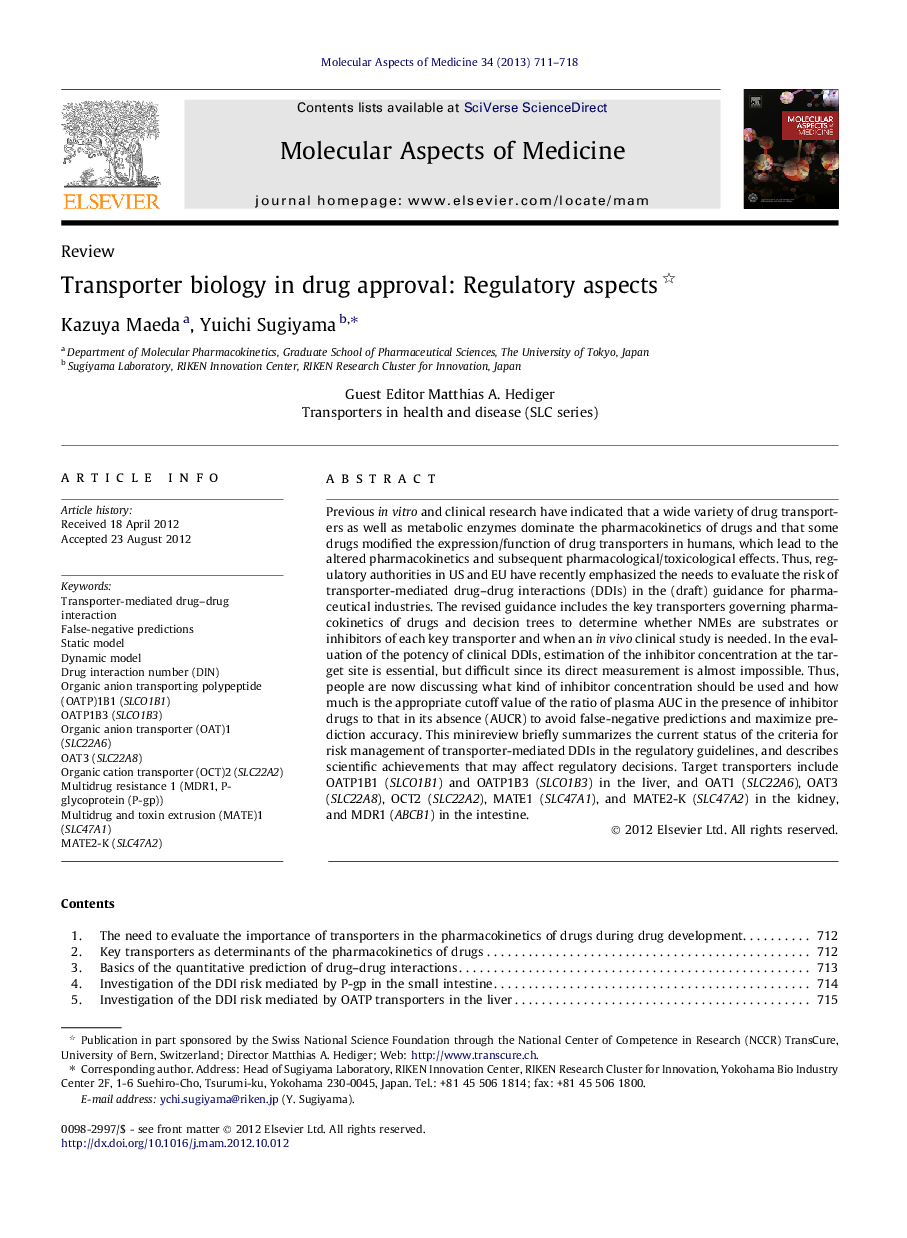| Article ID | Journal | Published Year | Pages | File Type |
|---|---|---|---|---|
| 8341611 | Molecular Aspects of Medicine | 2013 | 8 Pages |
Abstract
Previous in vitro and clinical research have indicated that a wide variety of drug transporters as well as metabolic enzymes dominate the pharmacokinetics of drugs and that some drugs modified the expression/function of drug transporters in humans, which lead to the altered pharmacokinetics and subsequent pharmacological/toxicological effects. Thus, regulatory authorities in US and EU have recently emphasized the needs to evaluate the risk of transporter-mediated drug-drug interactions (DDIs) in the (draft) guidance for pharmaceutical industries. The revised guidance includes the key transporters governing pharmacokinetics of drugs and decision trees to determine whether NMEs are substrates or inhibitors of each key transporter and when an in vivo clinical study is needed. In the evaluation of the potency of clinical DDIs, estimation of the inhibitor concentration at the target site is essential, but difficult since its direct measurement is almost impossible. Thus, people are now discussing what kind of inhibitor concentration should be used and how much is the appropriate cutoff value of the ratio of plasma AUC in the presence of inhibitor drugs to that in its absence (AUCR) to avoid false-negative predictions and maximize prediction accuracy. This minireview briefly summarizes the current status of the criteria for risk management of transporter-mediated DDIs in the regulatory guidelines, and describes scientific achievements that may affect regulatory decisions. Target transporters include OATP1B1 (SLCO1B1) and OATP1B3 (SLCO1B3) in the liver, and OAT1 (SLC22A6), OAT3 (SLC22A8), OCT2 (SLC22A2), MATE1 (SLC47A1), and MATE2-K (SLC47A2) in the kidney, and MDR1 (ABCB1) in the intestine.
Keywords
Related Topics
Life Sciences
Biochemistry, Genetics and Molecular Biology
Biochemistry
Authors
Kazuya Maeda, Yuichi Sugiyama,
